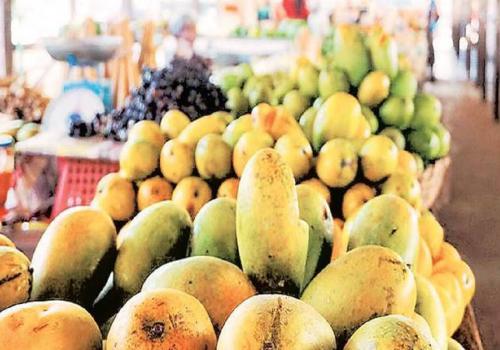Australia, the USA, Europe, UK New Zealand, Japan and South Korea are other potential markets for the Indian mango. India normally exports around 50,000 tonnes of the Alphonso and Kesar varieties of mangoes every year. Maharashtra is the largest mango exporter in the country and accounts for nearly 80% of the total export of the country. After a difficult season last year, mango growers in India are looking at higher exports this year. Malaysia and Argentina have emerged as the new markets for the Indian mango this season with exports to the Middle East expected to commence next month onwards, senior officials of the Maharashtra State Agriculture Marketing Board (MSAMB) said.
Australia, the USA, Europe, UK New Zealand, Japan and South Korea are other potential markets for the Indian mango. India normally exports around 50,000 tonnes of the Alphonso and Kesar varieties of mangoes every year. Maharashtra is the largest mango exporter in the country and accounts for nearly 80% of the total export of the country. At least 13,603 mango orchards have registered on MangoNet — an online traceability system in the current season. This includes 5000 Kesar growers and 9000 mango growers. MangoNet has been established by APEDA to register mango growers and exporters and enable importers and supermarkets in the EU to check complete details of their shipments — on the lines of ‘GrapeNet’ established for grapes. Last year only 8,700 orchards were registered on MangoNet. Officials from MSAMB, the state marketing board in Maharashtra, said they have been working at a frantic pace to ready all facilities for export. MSAMB has prepared its vapour heat treatment plant at Vashi, Navi Mumbai, irradiation facility at Baramati and export facilitation centre at Ratnagiri, pre-cooling storage facilities, ripening chambers and packhouse for export.
Sunil Pawar, MD, MSAMB, said around 600 tonnes was sent to the USA and Australia after irradiation in the 2018-19 season. “US sends an inspector to India to oversee the irradiation process. But last year, no exports happened to the US because the Inspector did not visit India due to the Covid outbreak. Discussions are still in process with the US officials,” Bhaskar Patil, Manager in charge of mango exports, MSAMB said. Japan has been importing mangoes from Indian since 2006 and sends inspectors to oversee the vapour heat-treatment process. However, last year because of the Covid-19 outbreak, the inspectors could not be sent to Mumbai. Instead, the Japanese government had permitted the Directorate of Plant Protection, Quarantine & Storage to oversee the necessary procedures, he said, adding it could be the same this season as well. High freight charges could be another damper that may affect exports, he said. It costs Rs 300 per kg to transport mangoes by air, he added.
Of the total mango exports from the country, Kesar accounts for 50-55%, Bangnapalli accounts for some 30%, Hapus or Alphonso another 13-15% and the remaining 40 other varieties account for the last 9-10% of the total outbound shipment. The mango season is expected to begin a month late with low arrivals in March due to the delay in winter. The government has granted Geographical Indication (GI) tag to the Alphonso mango from Ratnagiri, Sindhudurg and other adjoining areas, a move that will help identify the authenticity of this variety of fruit. This is expected to help in higher exports.
